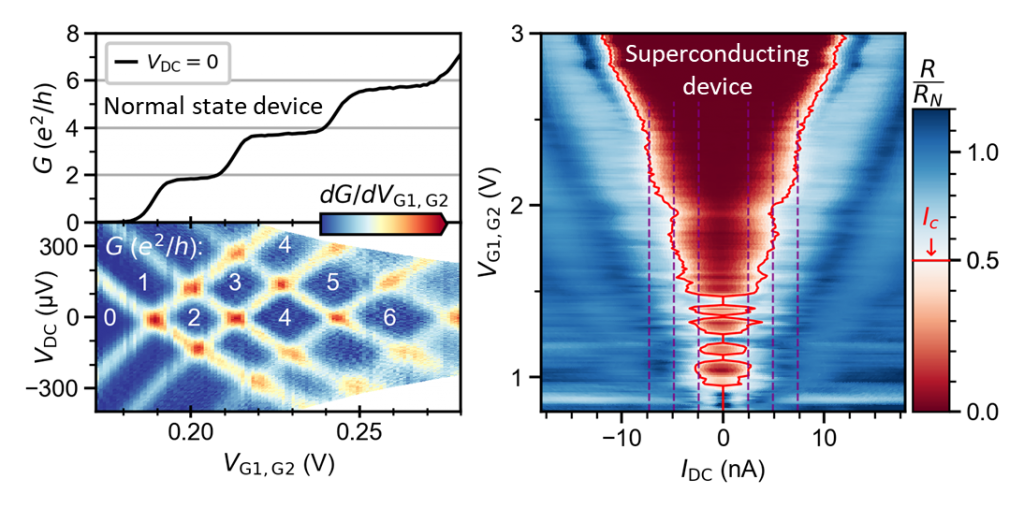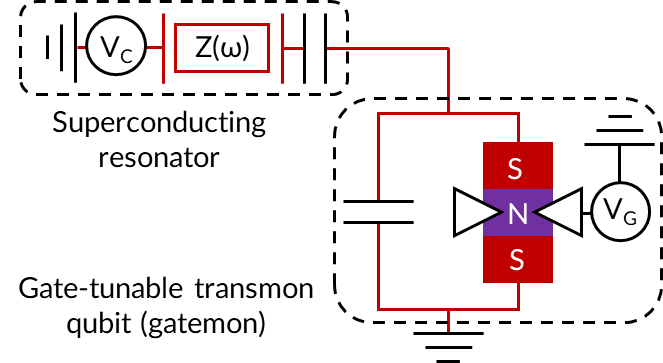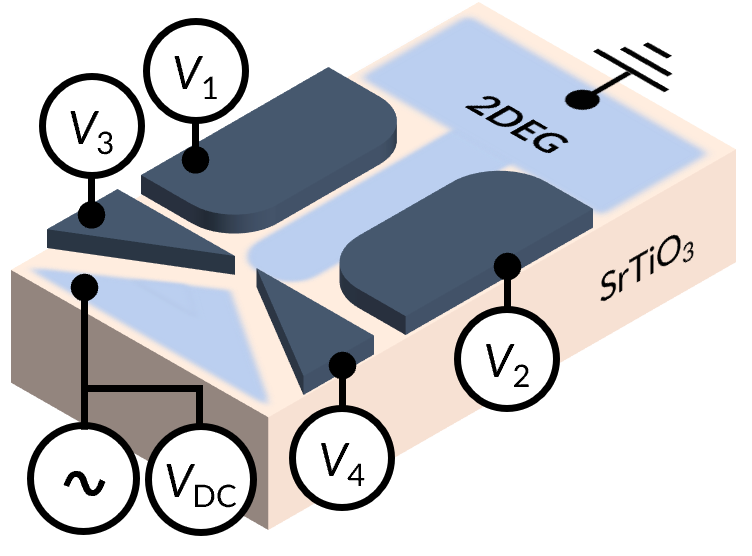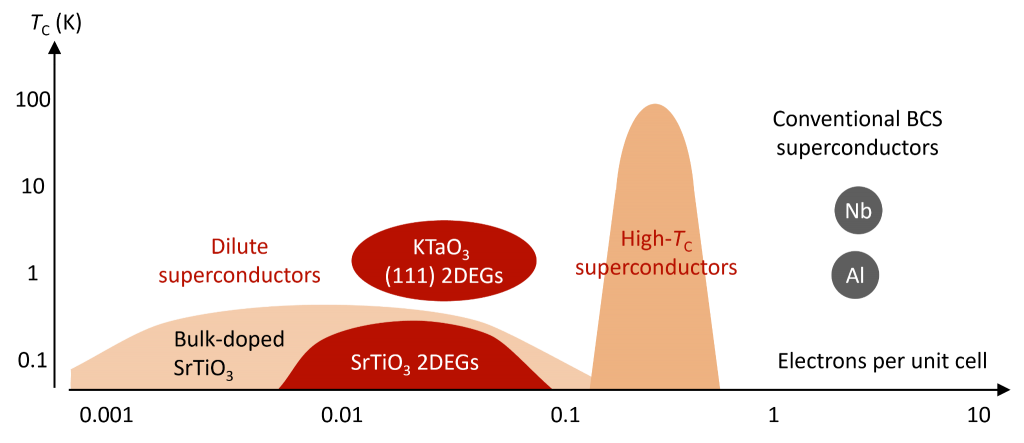Tunable superconducting nanostructures
A big focus in our group is on developing new techniques for clean patterning of superconductivity at the nanoscale and controlling it electrostatically. One promising route is to selectively accumulate a surface 2D electron gas in an oxide superconductor SrTiO3 using ionic liquid gating. Pre-patterned dielectric gates screen the ionic liquid polarization from the SrTiO3 channel, and prevent the insulator-to-superconducting metal transition underneath. This approach produces remarkable results in the planar constriction geometry. Clean ballistic transport through quantized discrete energy levels was demonstrated. We are looking to extend this promising new technique to other materials and new nanoscale geometries: quantum wires, rings, dots.
Key prior work:
- Mikheev, Goldhaber-Gordon et al., Sci. Adv. 7, eabi6520 (2021).
- Mikheev, Goldhaber-Gordon et al., arXiv:2110.11535.


Long-term goal 1: oxide gatemon qubits with tunable superconducting constrictions
The central challenge in quantum computing is in making quantum bits (qubits) more robust to noise and decoherence. Current superconducting architectures almost exclusively rely on fixed-frequency qubits, built around Josephson junctions based on aluminum and its oxide. But there are several upsides in enabling gate voltage tunability in such qubits, as could be possible if we made the junction from an oxide superconductor.
For example, gate voltage control of the qubit frequency could be used to rapidly tune the qubit into resonance with its environment or into isolation from it. Tunable junctions with cleanly quantized ballistic modes are especially intriguing for integration into qubits. They should enable unique approaches for intrinsic protection from decoherence, such as parity protection in “cos 2θ” qubits.

Long-term goal 2: topological superconductivity in oxide nanowires
One especially prized nanoscale geometry is a clean superconducting nanowire. The combination of one-dimensionality, superconductivity, spin-orbit coupling and in-plane magnetic field is the ingredient list to stabilize a topological superconductivity with Majorana bound states at the two ends of the nanowire. Owing to their unusual exchange statistics, these states could form the basis of a quantum computer with topological protection from decoherence.
Oxide superconductors offer a unique opportunity to combine all the necessary ingredients in a clean monolithic wire defined from a single material. This contrasts with the more ubiquitous and established hybrid approaches that structurally interface dissimilar semiconductor and superconductor materials.

Gate-defined oxide Majorana wire
Long-term goal 3: Understanding superconducting pairing mechanisms in SrTiO3 and KTaO3
SrTiO3 and KTaO3 are oxide perovskite with extremely rich material physics. Their superconductivity is unusual in how far it extends into the low carrier density regime, enabling us to control it electrostatically. The microscopic understanding of the relevant pairing mechanism is still an open question, and studying nanostructures made from these materials is an exciting place to look for answers. More broadly, an important scientific question is: what ingredients are needed for a material to superconduct at high Tc and/or at low charge carrier density? If we gained enough understanding to simultaneously accomplish both in a clean crystalline material or epitaxial heterostructure, it would be transformational for superconducting and quantum devices.
